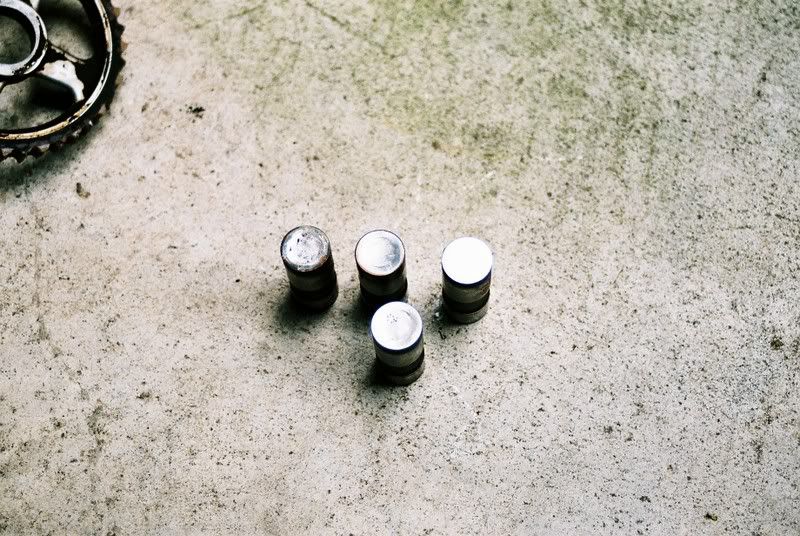When the original 3.5 litre V8 was removed from my P6B last year having covered 203,000 miles to make way the 4.6, it gave me the opportunity to dismantle the engine and take a good look around.
My Dad purchased the Rover in 1978, with just over 20,000 miles on the clock. Dad was always particular about changing the oil and filter every 2000 to 2500 miles, and when the Rover became my responsibility in 1985, I continued with that procedure for the next 22 years. Oil was originally Castrol GTX, then GTX2, and then Pennzoil GT Performance for a good 19 years. All were 20W-50 oils.
With the engine somewhat down on power compared to how it once was, I felt that the camshaft and lifters may have been one of many contributing factors. When lifters have been used in an engine for while it is not always possible to lift them out of the lifter gallery, rather the camshaft must be removed first and the lifters pushed through allowing them to fall into the sump (if it happens still to be on) for collection.
When new, the camshaft fitted to the P6B engines had a lift of 0.39". All the lobes bar two had been reduced in lift by approx 10%. Two lobes had been worn down by a massive 30% :shock: Effectively the engine was running on only 6 cylinders. As a note, a Rover camshaft that exhibits more than a 1% reduction in lift is considered worn and due for replacement. Even with this amount of wear, the engine was still smooth, with a lovely idle, but then of course wear takes place gradually, so you don't really notice the change. Compared to the new 4.6, my old 3.5 was very "tappy", with an idle not nearly as stable or as smooth as the new big engine.
The camshaft bearings were also very heavily worn. When new, these bearings are steel backed babbit lined, and they will wear first on the underside where the loading is greatest. The majority of the camshaft bearings showed considerable wear, with no lining left, the camshaft was spinning directly on the steel backing. :shock:
Rover stated in the P6B workshop manuals that these bearings are non serviceable, but they can be removed and new ones fitted, but it is a engine workshop job with specialist tools required, and of course the engine must be stripped and the block delivered bare, along with the camshaft to ensure smooth running.
I have attached some photos which illustrate some lifters and the camshaft. The concavity in one lifter is considerable, and when examined closely cracking of the base was evident. The camshaft wear is also very clear, with noticable erosion of the lobes.
Ron.


My Dad purchased the Rover in 1978, with just over 20,000 miles on the clock. Dad was always particular about changing the oil and filter every 2000 to 2500 miles, and when the Rover became my responsibility in 1985, I continued with that procedure for the next 22 years. Oil was originally Castrol GTX, then GTX2, and then Pennzoil GT Performance for a good 19 years. All were 20W-50 oils.
With the engine somewhat down on power compared to how it once was, I felt that the camshaft and lifters may have been one of many contributing factors. When lifters have been used in an engine for while it is not always possible to lift them out of the lifter gallery, rather the camshaft must be removed first and the lifters pushed through allowing them to fall into the sump (if it happens still to be on) for collection.
When new, the camshaft fitted to the P6B engines had a lift of 0.39". All the lobes bar two had been reduced in lift by approx 10%. Two lobes had been worn down by a massive 30% :shock: Effectively the engine was running on only 6 cylinders. As a note, a Rover camshaft that exhibits more than a 1% reduction in lift is considered worn and due for replacement. Even with this amount of wear, the engine was still smooth, with a lovely idle, but then of course wear takes place gradually, so you don't really notice the change. Compared to the new 4.6, my old 3.5 was very "tappy", with an idle not nearly as stable or as smooth as the new big engine.
The camshaft bearings were also very heavily worn. When new, these bearings are steel backed babbit lined, and they will wear first on the underside where the loading is greatest. The majority of the camshaft bearings showed considerable wear, with no lining left, the camshaft was spinning directly on the steel backing. :shock:
Rover stated in the P6B workshop manuals that these bearings are non serviceable, but they can be removed and new ones fitted, but it is a engine workshop job with specialist tools required, and of course the engine must be stripped and the block delivered bare, along with the camshaft to ensure smooth running.
I have attached some photos which illustrate some lifters and the camshaft. The concavity in one lifter is considerable, and when examined closely cracking of the base was evident. The camshaft wear is also very clear, with noticable erosion of the lobes.
Ron.







